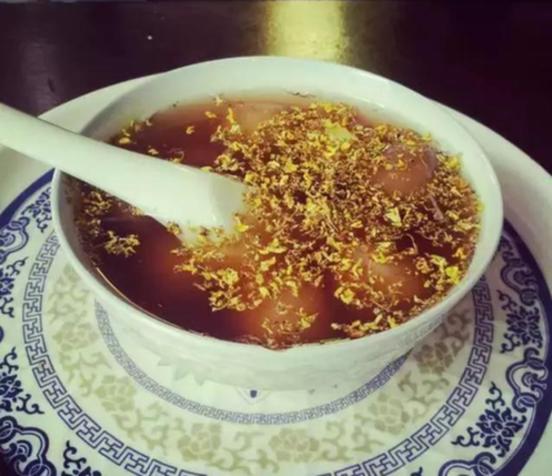Kunshan cuisine: the best bites of autumn
(chinadaily.com.cn)
 |
|
A bowl of taro soup with sweet osmanthus [Photo from Wechat account ksntv0512] |
Taro (Chinese: 芋艿)
Typically eaten from late August to mid-to-end September
Taro season has arrived and lovers of this starchy root vegetable are surely licking their lips with excitement.
Taro is more sophisticated in flavor than the potato, with nutty and sweet tones making this a tasty alternative type of carbohydrates. Furthermore, taro is low in fat and is an excellent source of fiber, important minerals, and vitamin B. Taro is also known to be a good digestive aid.
Word of warning; taro must be boiled before consuming. When raw it can be unpleasantly bitter and contains low levels of poison that can be damaging to health. In fact, even touching the corm without gloves can produce an irritating rash.
Taro thrives in regions with wet climates and has been eaten in East Asia for thousands of years. It is a popular vegetable throughout the world from Southeast Asia, to the Pacific Islands, to the Caribbean and the Americas.
Taro is a remarkably versatile vegetable and can be prepared both sweet and savory. It is typically either boiled or fried. In China it is commonly stir-fried or braised with either beef or pork. As a desert, taro cakes and taro-flavored ice cream continue to grow in popularity.
One particularly tasty way to eat taro is in a traditional taro soup, which has a slightly sweet flavor and is often garnished with sweet osmanthus- an orange flower with a delicate taste.
KUNSHAN IN MY EYE
- A novel venue to celebrate the art of Kunqu
Kunqu artist Zhang Jun racked up a new career achievement during his performance at the Modern Drama Valley festival at the Mercedes-Benz Arena on May 18, performing in a venue that is several times larger than what he is used to.
- US travel companies discover Suzhou
39 American travel professionals were given a two-day tour of the 2,500-year-old city from Sept 13 to 14, including visits to famous sights like Tiger Hill and Shantang Street, as well as chances to experience traditional Chinese art.


